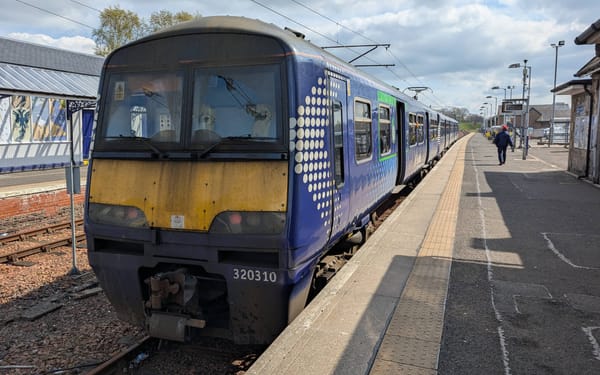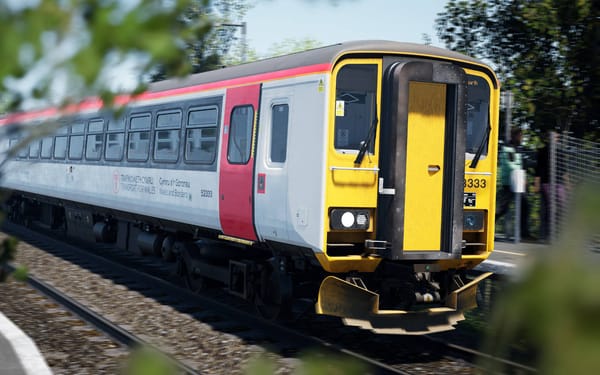Class 756

The Class 756 is a tri-mode multiple unit operated by Transport for Wales (TfW). 24 units were constructed by Stadler between 2021 and 2023. They first entered passenger service on 15 November 2024, and TfW plan for 14 to be in service by Spring 2024. They are the replacements for the Class 150, Class 153, and Class 769.
There are two subclasses, 756/0 and 756/1, which are formed of three and four passenger cars respectively. These are some of the most accessible trains on the network, with level boarding and automatic, retractable steps to bridge the gap. They belong to the FLIRT — Fast Light Intercity and Regional Trains — family of rolling stock, alongside the Class 745 and Class 755 (operated by Greater Anglia).
Seating is standard class only, and is arranged in a 2+2 configuration. There is space for up to six bicycles to be brought on-board. Plus, passengers can make use of free internet access and plug sockets for charging devices. There are digital passenger information displays (as opposed to dot matrix) throughout the train.
Overview
Technical specifications
756/1 – 4-car
756/1 – 80.7 m
On-board
756/1 — 158 seats
Accessibility
Subclasses
There are two subclasses of the Class 756. The 756/0 is formed of three passenger cars per unit (plus the power pack), whereas the 756/1 is formed of four passenger cars per unit (plus the power pack). Besides length and seated capacity, the on-board experiences of both subclasses are the same. They are both as accessible as each other.
| Subclass | Operator | Qty. | Year built | Passenger cars | Unit nos. |
|---|---|---|---|---|---|
| 756/0 | Transport for Wales Rail | 7 | 2021–2023 | 3 | 756001–756007 |
| 756/1 | 17 | 4 | 756101–756117 |
Context
Class 153
Class 769
Footnotes
- Tri-mode multiple units can operate with a pickup along appropriate track (i.e., where there are overhead lines or third rail installed), or using a diesel engine, or using a battery, for added flexibility.
- A pickup is a piece of equipment installed on a train to connect it to the supply of electricity, usually in the form of overhead lines or a third rail. On the Class 756, it will be used during electric, as opposed to diesel or battery, operation.
- The formations given do not include the power pack vehicle. The power pack vehicle contains the engines and generators required for diesel operation. It contains a narrow corridor, so it is still possible to walk to and from each end of the train.
- The trains will initially operate services along the recently electrified Merthyr, Aberdare, and Treherbert lines, until the Class 398 'tram trains' take their place. At that point, the Class 756s will be shifted to the Rhymney and Vale of Glamorgan lines.
References and attribution
- Fact file data: Stadler Rail Group (2022). FLIRT Tri-Modal Multiple Unit — Transport for Wales. [online] Available at: https://stadlerrail.com/media/pdf/fwbtri0922e.pdf [Accessed 21 Nov. 2024].
- Subclasses table and data: Forked from the English Wikipedia on 21 November 2024, copyright © the Wikipedia editors. Reproduced and distributed under the terms of the original license: CC-BY-SA 4.0. Available at: https://en.wikipedia.org/wiki/British_Rail_Class_756.
Contribute
If you notice that this fact file is out-of-date or otherwise missing information that you can provide, please get in touch.
This fact file was authored by Sebastien Jensen and last updated 21 November 2024.




